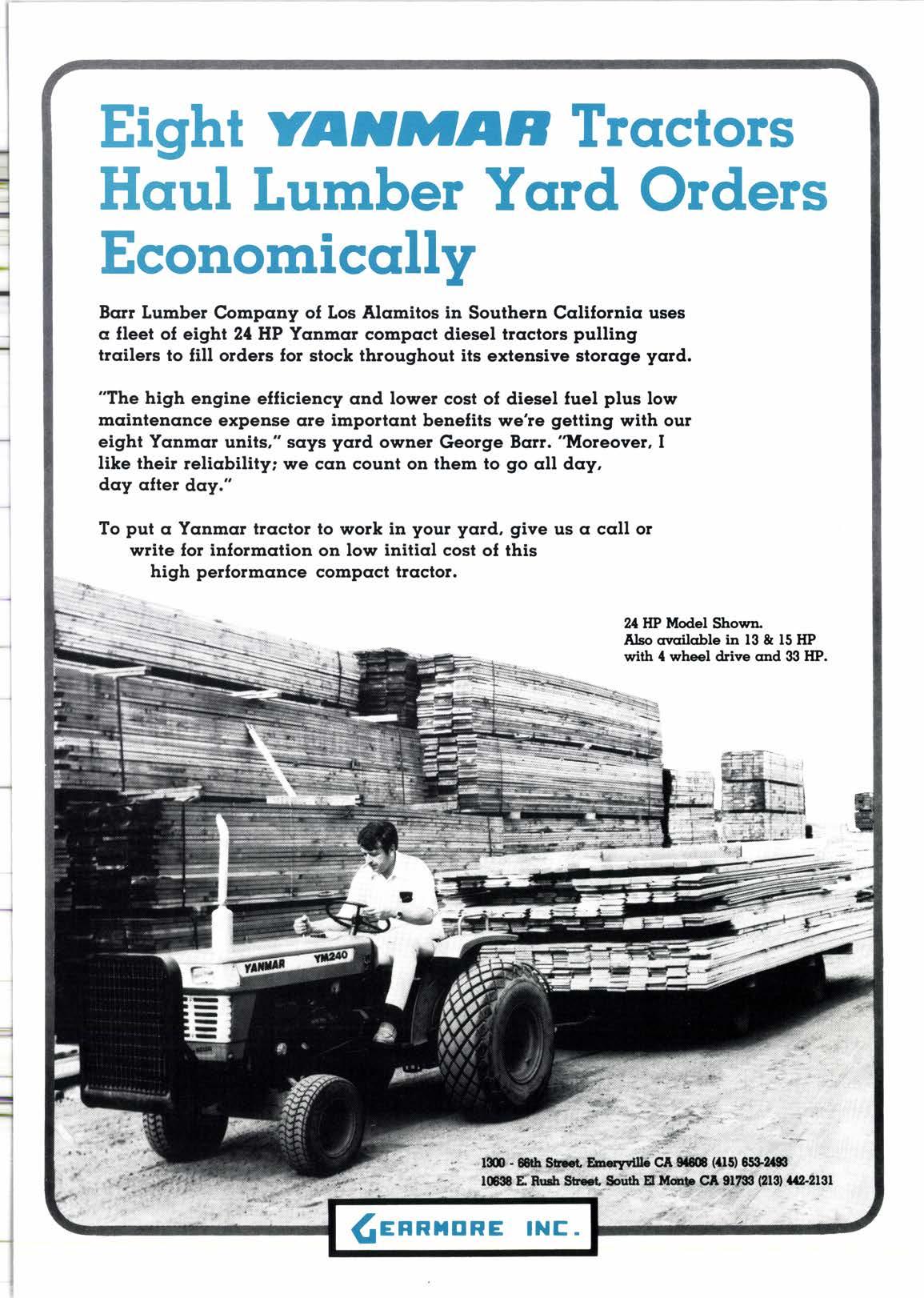
3 minute read
Short Term: Si ! Long Term: Caramba !
H. M. Niebling, western manager North American Wholesale Lumbcr Association
Iasryear,
Bwhen
we provided The Merchant with a lgTl business outlook, we admitted that our projection for this year's housing starts was consertive. It was. Our 1976 projection was also termed conservative and it turned out to be exactly that. In fact, we underestimated 1976 housing starts by 12% and 1977 housing starts by about 16%.
We won't term our 1978 outlook conservative. (Although it should be pointed out that out of seven or eight projections we have seen so far, we are predicting the second most conservative figure of the bunch.) We are telling our members that 1978 conventional housing starts will be in ,the 1.7 to 1.8 range.
We see little or no change in mobile and modular home activity. Ditto for industrial wood products demand. We see a continued increase in demand for wood products in remodeling markets. We see improvement in non-residential construction. Finally, we project an increase in multi-family residential and a decrease in single-family residential.
Readers know from experience that regardless of the overall numbers of starts, the "mix" can impact wood products demand.
This admittedly "loose" equation isn't very exciting and probably means that overall demand for wood will be
Story at a Glance
Housing starts in the 1.71.8 million unit range little or no change in manufactured housing and industrial wood product demand . improved non-residential markets, a decrease in single family home construction.
much the same as in 1977.It does indicate that we should experience a pretty good year in our industry.
At one of our midwestern retionals this year, we heard an articulate and interesting economist from a major Chicago bank. He approached the state of our U.S. economic health in a unique way. He briefly listed seven economic subjects that business shouldn't spend too much time worrying about, and two others that they should worry about. We think he made a lot of sense, and we'll share them with you.
(l) Don't overly worry about the stock market, because it won't do any good.
(2) Donrt worry about the Social Security problem, because it is too soon to do so.
(3) Don't worry about tax reform, because it is also too soon to fret about.
(4) Don't worry about the energy problem, because nothing is being done about it.
(5) Don't worry about the short term outlook for business. Business expansion is probably past its peak but will grow at a comfortable rate of aboul 4/z% in 1978.
(6) Don't worry about the inflation rate, as it will probably stay in the 6 ro 6/z% area during 1978. With major labor contracts already locked in, this projection on inflation is likely as accurate as it can ever be.
(7) Don't worry short term on the outlook for interest rates. They will continue to rise moderately (although not in a straight line) and thus be higher by the end of 1978.
The two things for businessmen to worry aboul, according to this economist, is that, one, he could be u/rong on all or most of the above. Secondly, the longer term or intermediate term outlook has plenty of things about which to worry.
Regarding the former, the uncer- tainty of federal government actions on energy, taxes and interest rates can affect any current prognostications. In short, President Carter and/or Congress and/or the Federal Reserve can certainly take actions that will affect our economy for better or for worse. This possibly can never be discounted.
For the longer term, there is plenty to worry about world-wide. The OPEC surpluses are unevenly redistributed, and the high level of inflation can only mean trouble during the rest of the Seventies and Eighties.
In our own particular industry, we seem to have a similar situation of getting by short term while facing peril down the road. This, in regard to timber supply and subsequent wood products supply. For the near term, we see no insurmountable problems on the supply side, but we are certainly in a long term or even intermediate term problem with timber availablity.
Now, if we could only decide when "short term" ends and "intermediate term"besins....
Railroad
(Continued from pa6e 11 ) ness and efficiency. Each day, SP runs two expedited freight trains from Portland to the greater Los Angeles area, on a firm schedule calling for arrival in 52 hours and 30 minutes.
Those trains carry dozens of carloads of lumber, newsprint, fibreboard, plywood and paper products from producers such as Crown Zellerbach, Weyerhaeuser, Georgia Pacific, Boise Cascade, Louisiana Pacific, International Paper, Publishers Forest Products, Western Kraft and many others.
SouthernPacific's railroad svstem stretches from the lumber country of the Pacific Northwest, centered at Portland, to the major urban centers of San Francisco, Los Angeles, Phoenix, Dallas-Ft. Worth, Houston, New Orleans, Memphis and East St. Louis.
During the first nine months of this year, SP's total operations earned record revenues of $ I ,573,475,000, up 13% from the same period of 1976. Net income for the same period rose 79%, to $91,820,000, or $3.41 per share of common stock, from $77,348,000, or $2.90 per share.



![HTNffiIHt ONt NATIONAT TUTNIIHAIGAN HI1PYOU EAINA BISEM SHAff OTIHT NrcH IO{I-YOUNSH] MARKTI](https://assets.isu.pub/document-structure/230727160305-f0cee76c8a861d0078a09172e6c764af/v1/9569d4286fe9d100664f01a230a713f3.jpeg)








